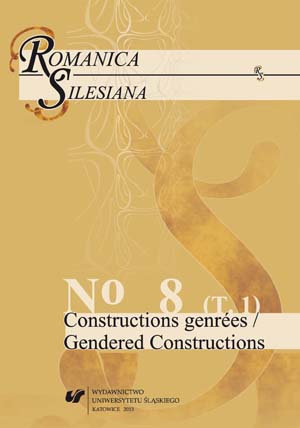Homosocial Bonds and Narrative Strategies in Adolphe Belot’s "Mademoiselle Giraud, ma femme" (1870)
Homosocial Bonds and Narrative Strategies in Adolphe Belot’s "Mademoiselle Giraud, ma femme" (1870)
Author(s): Iwona JanickaSubject(s): Literary Texts
Published by: Wydawnictwo Uniwersytetu Śląskiego
Keywords: 19th-century literature; French literature; queer studies; male lesbianism; lesbian; narratology; René Girard; mimesis; triangular desire; Adolphe Belot; implied reader; homosocial bonds; manipulation
Summary/Abstract: Adolphe Belot’s bestseller "Mademoiselle Giraud, ma femme" (1870) is a striking example of narratological tension between implied readers and the narrator. Adrien’s narrative, recounting the story of his unhappy marriage to a lesbian Paule Giraud, is significantly influenced by homosocial bonds with the male reading public — the implied readers of the text. Conscious of clear expectations towards a heterosexual man and a husband, the narrator reverts to hyperheterosexual narration in order to give legitimacy to his story and his desires. However, his narrative strategies backfire on him and, in consequence, undermine his credibility. The paper shows how tension in the choice of narrative tools subverts the blatantly anti-lesbian message of the text. By using René Girard’s theory of triangular desire and mimesis, the article also proves that the narrator is a male lesbian who had to subscribe to 19th-century convention of a husband.
Journal: Romanica Silesiana
- Issue Year: 8/2013
- Issue No: 1
- Page Range: 138-150
- Page Count: 13
- Language: English

